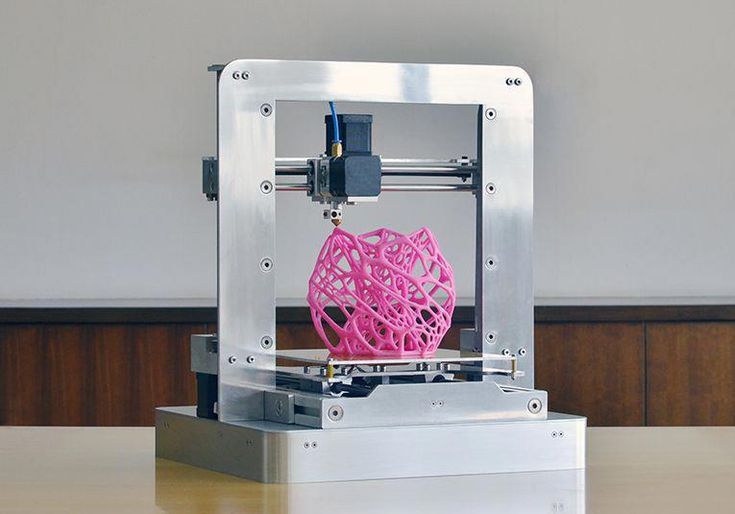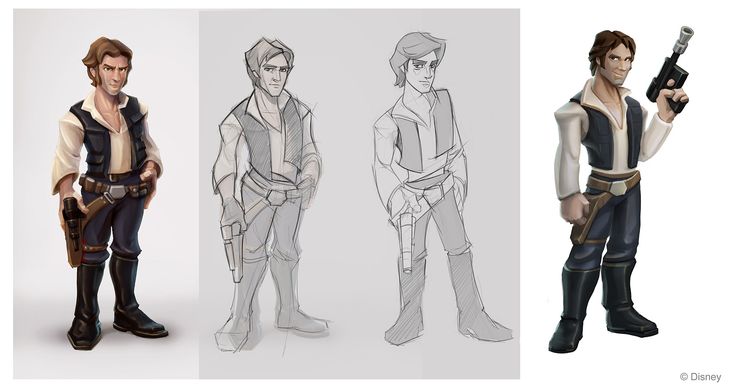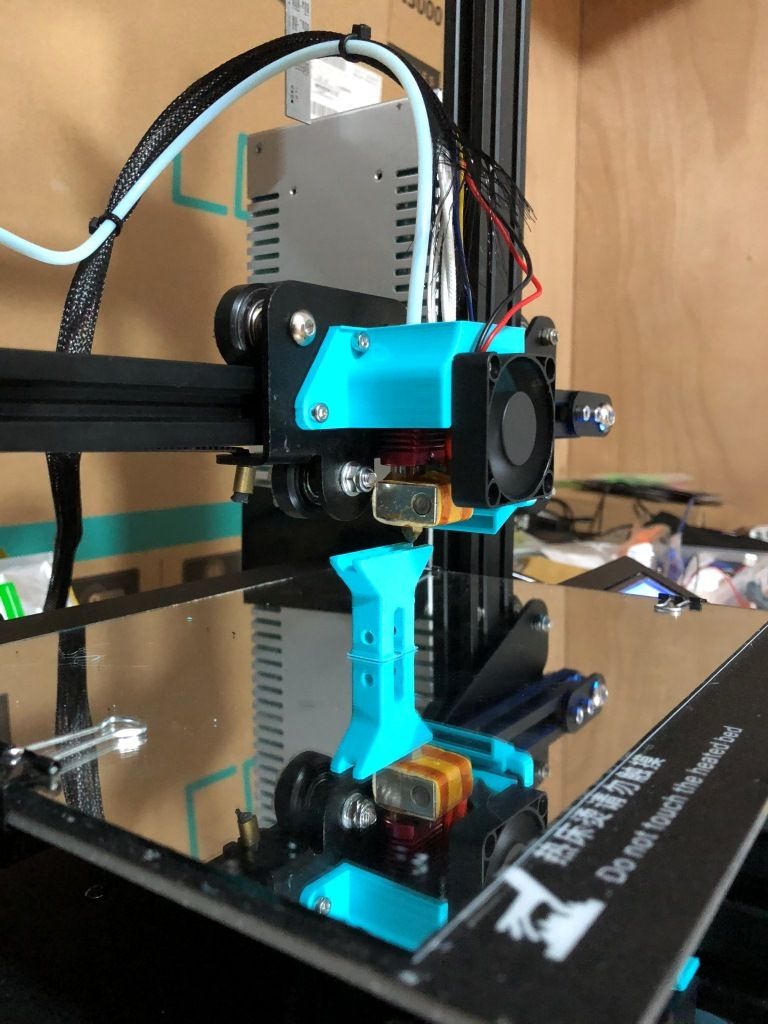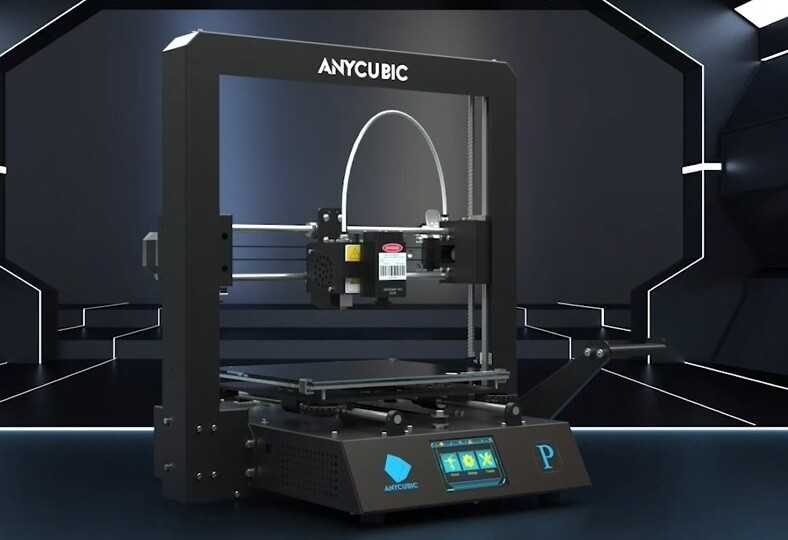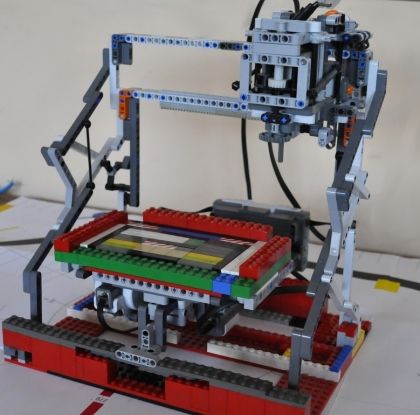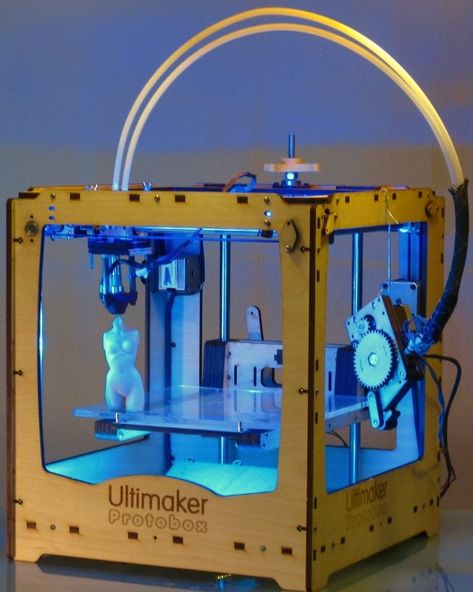The tiko 3d printer
The Tiko Printer: What Happens When You Innovate Too Much
Sometime in the very distant future, the Universe will become the domain of black holes. Energy and entropy will be compressed into minuscule quantum fluctuations. Even in this domain of nothingness, there will still be one unassailable truth: you should not buy a 3D printer on Kickstarter.
We’re no strangers to failed 3D printer crowdfunding campaigns. Around this time last year, backers for the Peachy Printer, an inordinately innovative resin printer, found out they were getting a timeshare in Canada instead of a printer. This was unusual not because a crowdfunding campaign failed, but because we know what actually happened. It’s rare to get the inside story, and the Peachy Printer did not disappoint.
For the last few months, we’ve been watching another crowdfunding campaign on its long walk to the gallows. The Tiko 3D printer is another 3D printer that looks innovative, and at the time of the crowdfunding campaign, the price couldn’t be beat. For just $179 USD, the backers of the Tiko printer would receive a 3D printer. Keep in mind the Tiko launched nearly two years ago, when a bargain-basement printer still cost about $400. Fools and money, or something like that, and the Tiko 3D printer campaign garnered almost three million dollars in pledges.
Now, after almost two years of development, Tiko is closing up shop. In an update posted to the Tiko Kickstarter this week, Tiko announced they are laying off their team and winding down operations. It’s a sad but almost predictable end to a project that could have been cool. Unlike so many other failed crowdfunding campaigns, Tiko has given us a post-mortum on their campaign. This is how the Tiko became a standout success on Kickstarter, how it failed, and is an excellent example of the difference between building one of something and building ten thousand.
Why the Tiko Was a Hit
The Tiko printer was an easy sell. All you had to do was look at your favorite tech blog and see someone was selling a 3D printer for less than one hundred dollars. Yes, that was the super early bird price, but that’s cheap for a 3D printer. In 2015, unimaginably so. The regular price, and what non-early bird Kickstarter backers paid, was only $179 USD. Even today, with the machinations of dozens of factories in China, this is a very inexpensive price point. In fact, only with the upcoming release of Monoprice’s $150 delta printer will we see a printer that is as capable while still being this inexpensive.
Yes, that was the super early bird price, but that’s cheap for a 3D printer. In 2015, unimaginably so. The regular price, and what non-early bird Kickstarter backers paid, was only $179 USD. Even today, with the machinations of dozens of factories in China, this is a very inexpensive price point. In fact, only with the upcoming release of Monoprice’s $150 delta printer will we see a printer that is as capable while still being this inexpensive.
The astonishing economy of the Tiko leads to an obvious question. How did the Tiko team plan to build a 3D printer and send it out the door for less than $200? Even today, sourcing and building the most bare bones i3 clone will cost more than that. In 2015, the costs were even higher.
Tiko’s unibody construction. By building a linear motion system into the enclosure, Tiko significantly reduced the cost of their bill of materials.The answer comes from something that sounds like it’s glomming onto Apple ad copy: unibody construction.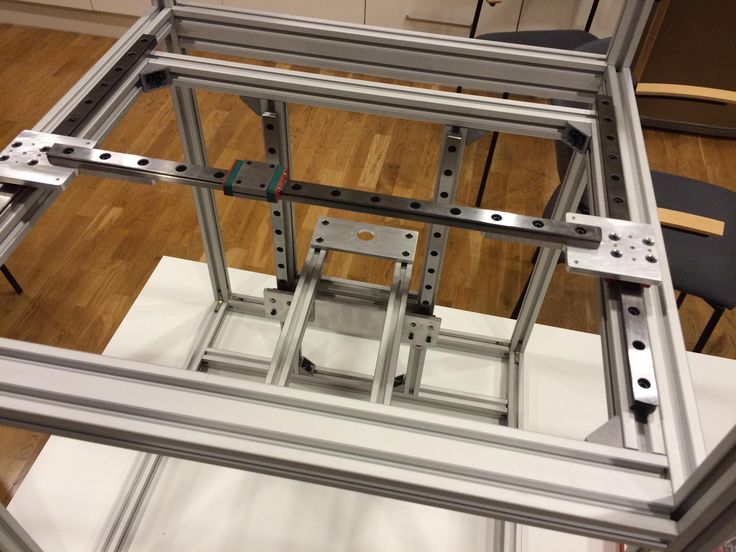 The body of the Tiko is a single part with an integrated c-channel used as the linear rails of this delta bot. This unibody construction is, quite simply, ingenious. If you’ve ever assembled a RepRap Mendel, or any of the other threaded rod printer monstrosities from back in the day, you know the frame of a 3D printer is what makes or breaks the build. By using an extrusion with integrated rails, the Tiko team brought the cost of a frame down while making their assembly easier. From a manufacturing standpoint, Tiko’s unibody construction is brilliant, and we won’t be surprised when we see another delta bot with the same sort of enclosure.
The body of the Tiko is a single part with an integrated c-channel used as the linear rails of this delta bot. This unibody construction is, quite simply, ingenious. If you’ve ever assembled a RepRap Mendel, or any of the other threaded rod printer monstrosities from back in the day, you know the frame of a 3D printer is what makes or breaks the build. By using an extrusion with integrated rails, the Tiko team brought the cost of a frame down while making their assembly easier. From a manufacturing standpoint, Tiko’s unibody construction is brilliant, and we won’t be surprised when we see another delta bot with the same sort of enclosure.
At its very core, Tiko was innovative. This is a 3D printer that was built around standardized manufacturing processes. Yes, building a ‘unibody’ 3D printer will require a significant capital investment to get the first printer off the assembly line. Once that’s done, though, the creators of the Tiko printer would have a viable product that could be manufactured for far less than their competitors.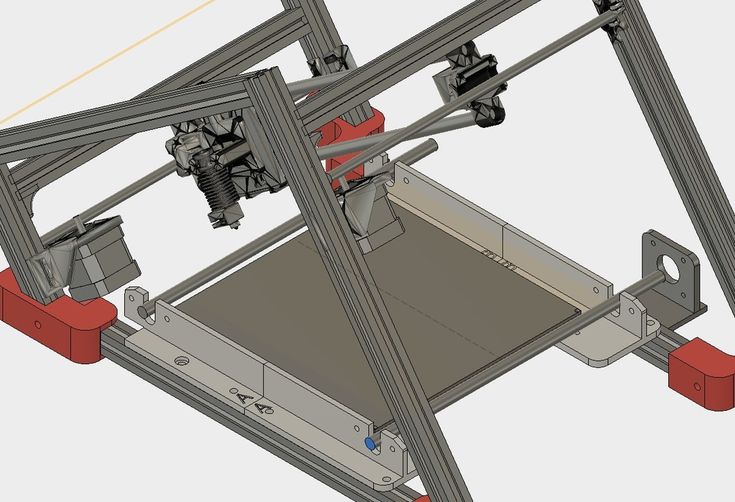
Why the Tiko Failed
Tiko put a lot of innovation into their unibody frame. Unfortunately, they decided to extend that innovation to the rest of the printer. Even before the Tiko Kickstarter was a week old, the 3D printer forumheads had questions about the Tiko printer.
The usual method for linear motion in a 3D printer is a stepper motor. NEMA 17 stepper motors are par for the course. The historical pricing of NEMA 17 motors is itself interesting: back in 2008, before the RepRap project came to fruition, it wasn’t unrealistic to spend $40 on a single NEMA 17 motor with a driver. Now, you can pick up the same parts for less than half that cost.
Instead of relying on the ecosystem that has enabled very inexpensive printers, Tiko chose to go their own way. They used cheaper but much lower torque stepper motors on their printer. This would cause severe issues with the printer. Of the over four thousand units Tiko shipped, there were far too many reports of layer shifting and missed steps than you would expect. In the most severe cases, the Tiko printer could not print a simple cube.
In the most severe cases, the Tiko printer could not print a simple cube.
Even in the electronics, Tiko strove for innovation.
Right now, the state of electronics for 3D printers is heavily derived from the original RepRap projects. Derivatives of the Arduino Mega, using the ATmega2560 and ATmega32u2 microcontrollers, are the norm. The new LulzBot Brain Box uses a RAMBo board with this microcontroller. The electronics for the vast majority of 3D printers is derived from those initial 3D printer experiments, and that means a decade of technical debt.
Tiko advertised WiFi printing during their Kickstarter campaign. Right now, the easy way to do a WiFi printer would be a standard ATmega-based controller board with an ESP8266 WiFi module. This would be easy, but it wouldn’t be cheap. Instead of the easy solution, Tiko turned to a neat WiFi-enabled microcontroller released by Texas Instruments. The CC3200 gave the Tiko a powerful ARM Cortex-M4 microcontroller and WiFi. Given the smooth acceleration found in even the cheapest ARM controller boards, this is a win.
The CC3200 gave the Tiko a powerful ARM Cortex-M4 microcontroller and WiFi. Given the smooth acceleration found in even the cheapest ARM controller boards, this is a win.
But there’s a reason everyone keeps using older Arduino-based controller boards. Nearly all the firmware for 3D printers is built around the Arduino Mega. Building a printer controller board around a relatively new part means building everything from scratch. This is development time Tiko didn’t have, and engineering time Tiko couldn’t afford.
Despite this, Tiko actually managed to build and ship over four thousand printers. Given Tiko took in nearly three million dollars from 16,000 Kickstarter backers, this doesn’t sound like much. Consider the decisions Tiko made, and it’s remarkable. They had ordered their complete BOM before a prototype was finalized. The decision to use cheap stepper motors led directly to the very poor performance of the finalized design. The efforts to fix hardware problems in software were not effective.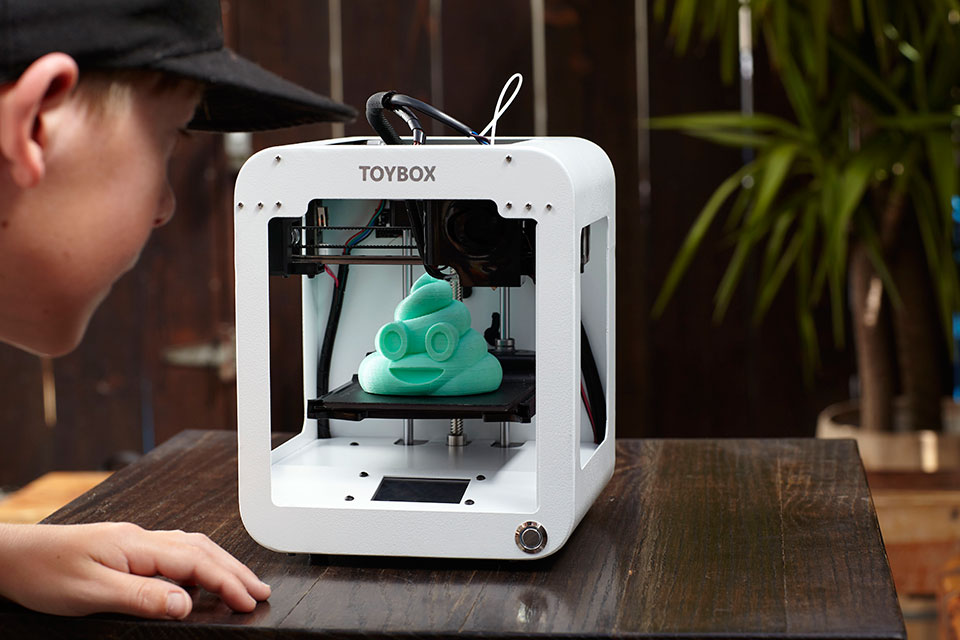 Eventually, Tiko had too much technical debt to pay off. It certainly didn’t help that this was a 3D printer selling for a bargain-basement price, either. There’s only so much margin on a $200 printer, and from the start there wasn’t much left over for the engineering needed to make a good, cheap 3D printer.
Eventually, Tiko had too much technical debt to pay off. It certainly didn’t help that this was a 3D printer selling for a bargain-basement price, either. There’s only so much margin on a $200 printer, and from the start there wasn’t much left over for the engineering needed to make a good, cheap 3D printer.
The Future of Tiko
By the end of 2016, Tiko was effectively dead. Last week, they gave up, shutting down production, and refusing to refund backers. Tiko has even refused refunds on shipping costs, a move that led to an online petition and — get this — a Kickstarter campaign to start a class action lawsuit against Tiko. Tiko is dead, although they are actively pursuing additional investors.
Far too often we look at Kickstarters from an engineering perspective. What’s missing in these discussions is a look at Kickstarters from a business perspective. What Tiko has done is out-innovated themselves. They came up with a rather remarkable system for the frame of a 3D printer, but one that isn’t quite right for a hardware startup. They developed brand new hardware for the 3D printer community but backed themselves into a corner when their engineering team couldn’t keep up. They spent all their money buying components before their design was finalized. These aren’t poor engineering decisions, they’re poor business decisions.
They developed brand new hardware for the 3D printer community but backed themselves into a corner when their engineering team couldn’t keep up. They spent all their money buying components before their design was finalized. These aren’t poor engineering decisions, they’re poor business decisions.
Twelve thousand people have spent $200 (plus about $60 in shipping) on a printer they won’t receive. Four thousand people have a printer that doesn’t live up to their expectations. The Tiko team has a three million dollar failure hanging over their heads. No one is happy with this situation. Yet it can all be traced back to a single problem. This is what you get when you innovate too much.
5 Best Tiko 3D Printer Review – Alternatives 2022
On March 30, 2015, a Kickstarter project was opened to create a revolutionary new 3D printer. One month later, in April 2015, the Kickstarter had raised $2,950,874 from 16,538 backers who put up at least $179 each. Shipping was estimated to start in November 2015, approximately seven months later.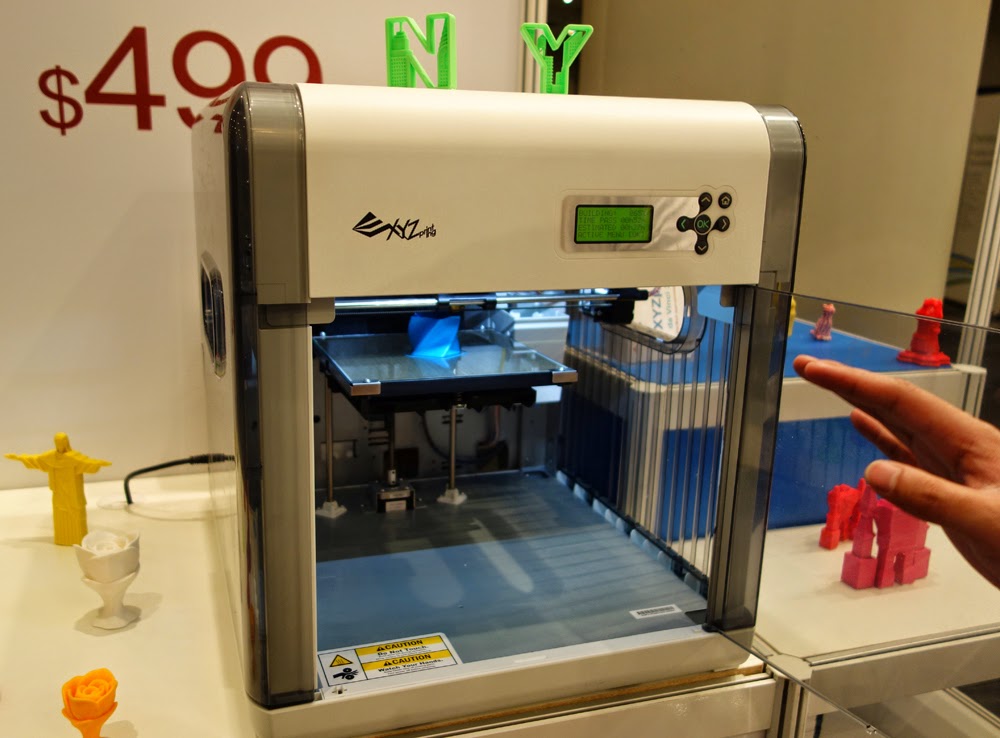 The printer was going to be known as the Tiko Unibody 3D Printer.
The printer was going to be known as the Tiko Unibody 3D Printer.
The designers of this printer were visionaries in every sense of the word. The Tiko 3D printer what the creators of the term "state-of-the-art" had in mind when they coined the phrase. Here are some of the planned specifications.
- The maximum print volume was supposed to be 138.3 cubic inches.
- The shape of the print area wouldn't have been the usual rectangle or circle. Instead, it would have been triangular but with rounded corners. The height would have been 4.9 inches. If you were printing something with a cylindrical shape, the diameter of that cylinder could have been as large as 4.9 inches.
- The layer resolution was supposed to be 50 to 250 microns.
- The printing zone would have been enclosed.
- The print bed would have been made of a flexible plastic. That would have made it easy to pop off the printed item without damaging it.
- Tiko would have been able to connect to Wi-Fi so that you could print from virtually anywhere, including a smartphone.
 If Wi-Fi was not available, you could have used the printer to create a wireless access point. This would have let you print directly from your computer to the printer.
If Wi-Fi was not available, you could have used the printer to create a wireless access point. This would have let you print directly from your computer to the printer. - If the unit was ever jarred or moved while printing, a built-in accelerometer would have sensed this and shut the Tiko down automatically.
- The accelerometer would have also had a role in the automatic calibration process.
This was your big chance to participate in the development of cutting-edge technology. For a mere $179, you could have contributed to a Kickstarter project and gotten a new type of 3D printer, one that would have made IT history.
The first shipment (from Hong Kong) went out in December 2016. That was 13 months after the initial expected ship date. Those units, once they were set up by the new owners, had problems. By February 22, 2017, the project was over. The Tiko 3D printer became someone’s broken dream. There were subsequent efforts to revive the brand, but nothing came of them.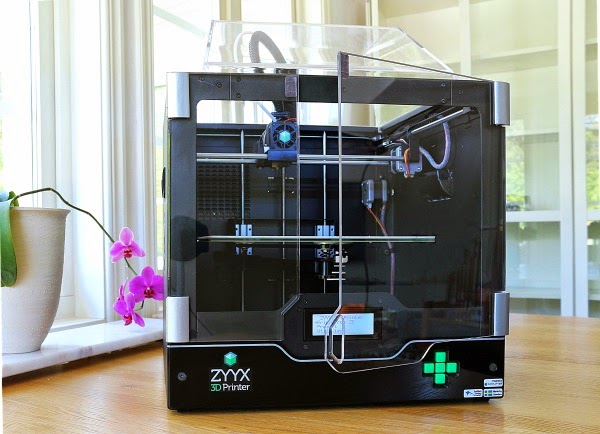 In the end, the biggest problem was probably not the design or planning. It was probably that the project was underfunded and couldn’t survive the bad times.
In the end, the biggest problem was probably not the design or planning. It was probably that the project was underfunded and couldn’t survive the bad times.
Even though their $179 investment was gone, those who contributed to the Tiko Kickstarter project were offered an inexpensive way to acquire a 3D printer. The CEO of M3D offered anyone who lost money on the Tiko Kickstarter the opportunity to purchase a Micro 3D Printer for a discounted price of $199. It was a good deal for anyone who accepted the offer and a smart way for M3D to expand its customer base.
There are plenty of other options available for those who were hoping to purchase a Tiko 3D printer. We will list some of those alternatives for you. But first, here is some background information on 3D printers.
| Preview | Product | Price | |
|---|---|---|---|
Monoprice Mini Delta v2 3D Printer (110 x 120mm) Heated Build Plate,.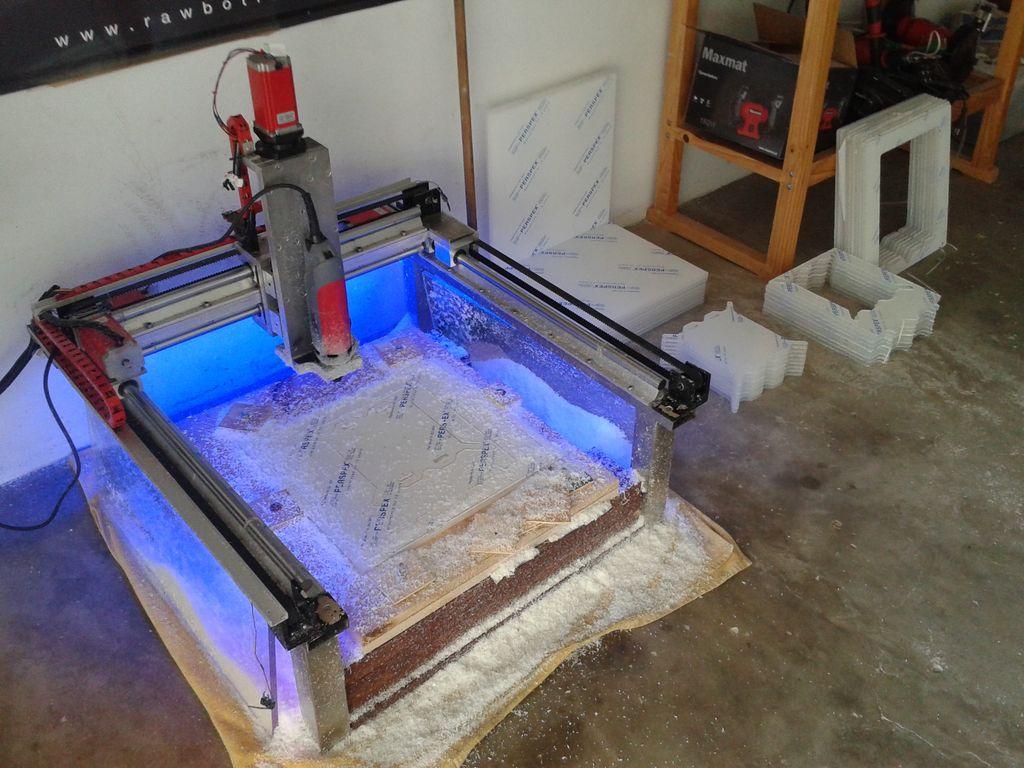 .. .. | $244.56 | Buy on Amazon | |
| M3D Micro+ Desktop 3D Printer for Home, Work, and School Use, Includes... | Buy on Amazon | ||
| Promotion! Print-Rite CoLiDo Delta 3D Printer Kossel Kit D1315 Plus... | Buy on Amazon |
Image by Karolina Grabowska from Pixabay
The printers we reviewed were chosen based on price. We were looking for printers at a price close to the $179 that would have been spent on the Tiko. Quite a bit of time has passed since the beginning of the Tiko project. In that time, technology has marched on. It is reasonable to expect that since then, prices have dropped, and functionality has increased. It is interesting to see how some of the ideas in the Tiko design have made it into currently available printers.
We were looking for printers at a price close to the $179 that would have been spent on the Tiko. Quite a bit of time has passed since the beginning of the Tiko project. In that time, technology has marched on. It is reasonable to expect that since then, prices have dropped, and functionality has increased. It is interesting to see how some of the ideas in the Tiko design have made it into currently available printers.
All the printers reviewed here are delivered completely assembled. There are many more available in this price range that require assembly. Some even come in the form of a kit, which sounds like an extreme form of assembly. If you are good with your hands, have a sense of adventure and have the patience of a saint, you might do well to find a kit. This will give you lot more printer for the money.
Overall Price Range of This ProductImage by Lutz Peter from Pixabay
In general, the cost of filament-based 3D printers ranges from the low hundreds to many thousands of dollars. Because we are looking to replace a $179 Tiko printer, we have decided to limit our price range to between $150 and $350.
Because we are looking to replace a $179 Tiko printer, we have decided to limit our price range to between $150 and $350.
Monoprice Mini Delta 3D Printer
Monoprice Mini Delta v2 3D Printer (110 x 120mm) Heated Build Plate,...
- Touchscreen Control, Updated Firmware and UI: You spoke and we listened. Larger icons, clear and concise instructions,...
- Fully assembled: the mp mini delta 3D printer comes fully assembled, ready to print out of the box
- PoloPrint Pro Wi-Fi Connection: Connect to the printer over Wi Fi using the updated PoloPrint Pro app for iOS or...
Price | $159 |
Setup | Assembled |
Interface | Wi-Fi, USB, microSD |
Display | LCD |
Technology | FFF |
Print Area | 4. |
Enclosed | No |
Heated Bed | Yes |
Bed Leveling | Auto |
Nozzle Size | .04 mm |
Extruders | 1 |
Software Inc. | Cura, supports Windows XP or later, Mac OS X (10. |
Resolution | 50 micron |
Dimensions | 14.2” x 10.4” x 16.9” |
Weight | 30.6 lbs |
Includes | USB cable, microSD card, power adapter, cord |
Where To Buy | Monoprice, Amazon |
Warranty | 30-day money back guarantee, one year for repair of manufacturer’s defects |
This low-end printer has it all.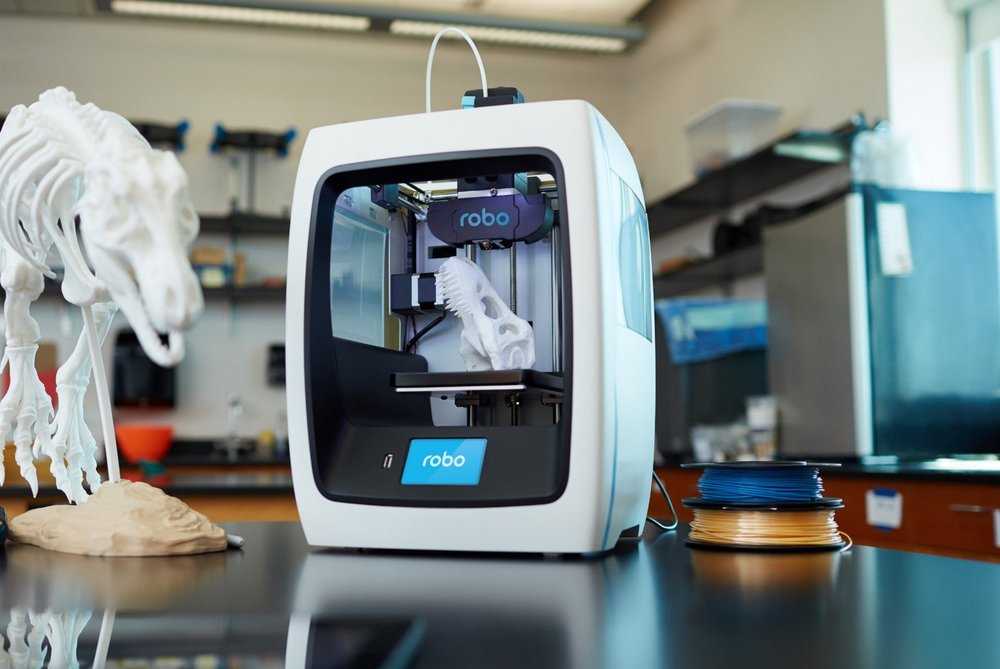 It works right out of the box and, except for its lack of enclosure, it has all the great features of higher-end systems. Wi-Fi connectivity allows you to cut the leash to your computer. It only addresses smaller print projects, but if you can work with that limitation, this printer is for you. This model is also worth considering if you are looking to buy your first 3D printer.
It works right out of the box and, except for its lack of enclosure, it has all the great features of higher-end systems. Wi-Fi connectivity allows you to cut the leash to your computer. It only addresses smaller print projects, but if you can work with that limitation, this printer is for you. This model is also worth considering if you are looking to buy your first 3D printer.
- Wi-Fi interface
- SD card
- Excellent features at a low cost
- Heated bed
M3D Micro+ Desktop 3D Printer for Home, Work, and School Use, Includes...
Price | $349 |
Setup | Assembled |
Interface | USB |
Display | No |
Technology | FFF |
Print Area | 4. |
Enclosed | No |
Heated Bed | No |
Bed Leveling | Auto |
Nozzle Size | 0.35 mm |
Extruders | 1 |
Software Inc. | M3D |
Resolution | 50 to 350 microns |
Dimensions | 7. |
Weight | 4.4 lbs |
Includes | M3D software, USB cable, power adapter |
Where To Buy | Amazon, M3D website |
Warranty | Three months for manufacturer’s defects |
- Lightweight
- No Display
da Vinci Mini Wireless 3D Printer
No products found.
Price | $200 |
Setup | Assembled |
Interface | USB, Wi-Fi |
Display | No |
Technology | FFF |
Print Area | 5. |
Enclosed | No |
Heated Bed | No |
Bed Leveling | Auto |
Nozzle Size | .04 mm |
Extruders | 1 |
Software Inc. | XYZware, supports Windows 7 and above, Mac OSX 10. above |
Resolution | 100 microns |
Dimensions | 15.4” x 13.2” x 14.2” |
Weight | 18 lbs |
Includes | Starter filament |
Where To Buy | XYZ Printing, Amazon |
Warranty | Undetermined |
This is another excellent entry-level printer that works right out of the box.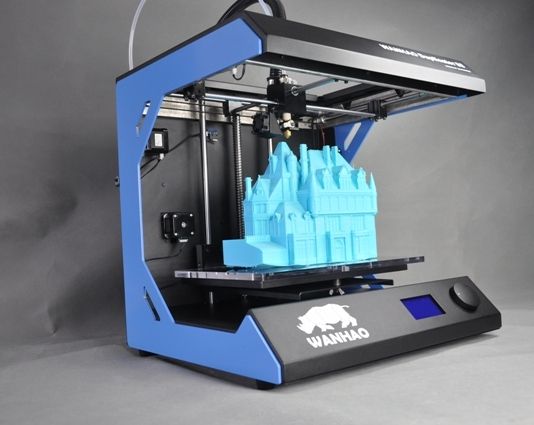 Wi-Fi connectivity is a big plus, as is that automatic bed-leveling feature. The resolution of 100 microns is good, but not great. It only runs filaments available from XYZ Printers. The proprietary XYZware software is provided.
Wi-Fi connectivity is a big plus, as is that automatic bed-leveling feature. The resolution of 100 microns is good, but not great. It only runs filaments available from XYZ Printers. The proprietary XYZware software is provided.
- Wi-Fi interface
- Uses only XYZ Printing filaments
- Resolution
HopeWant Desktop 3D Printer
No products found.
This seems to be a good entry-level printer. Remove it from the shipping carton, and it’s ready to go. It prints either from the computer or the SD card (TF card).
- SD Card
- Price
- No Display
- Resolution
Print-Rite CoLiDo Delta 3D Printer
Promotion! Print-Rite CoLiDo Delta 3D Printer Kossel Kit D1315 Plus...
- Fast print: Delta design, 3 axles moving at the same time, 30% faster than XYZ printing technology
- 0.
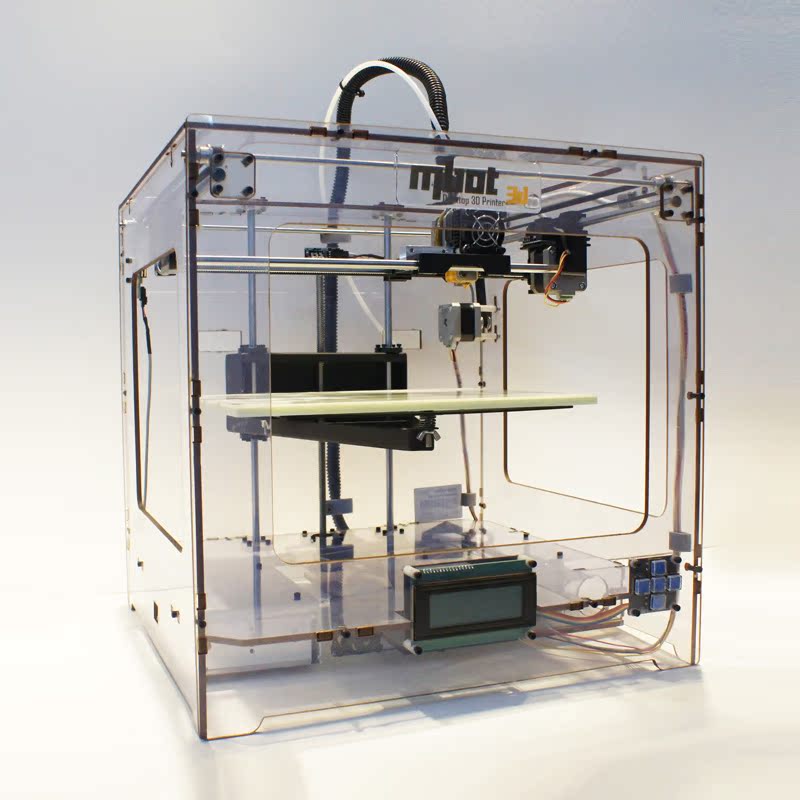 05 mm layer resolution printing quality, two times more precise than other low cost 3d printers, which usually print...
05 mm layer resolution printing quality, two times more precise than other low cost 3d printers, which usually print... - Ready to print, fully assembled and calibrated. Compact design with premium quality parts, portable machine with...
Price | $269 |
Setup | Assembled |
Interface | USB |
Display | No |
Technology | FDM |
Print Area | 5” diameter x 5. |
Enclosed | No |
Heated Bed | No |
Bed Leveling | No |
Nozzle Size | .04 mm |
Extruders | 1 |
Software Inc. | Repetier-Host, supports Windows 7 and above, Mac |
Resolution | 50 microns |
Dimensions | 9. |
Weight | 12 lbs |
Includes | Flash drive, USB cable, adapter, filament |
Where To Buy | Amazon, CoLiDo |
Warranty | 30-day return policy, one-year international warranty |
The price of this unit is at the high end of our range but, as always, you get what you pay for. This printer is different from the others in that it is configured for a circular print area. It is easy to set up, and it prints quickly due to its three-axis parallel movement system.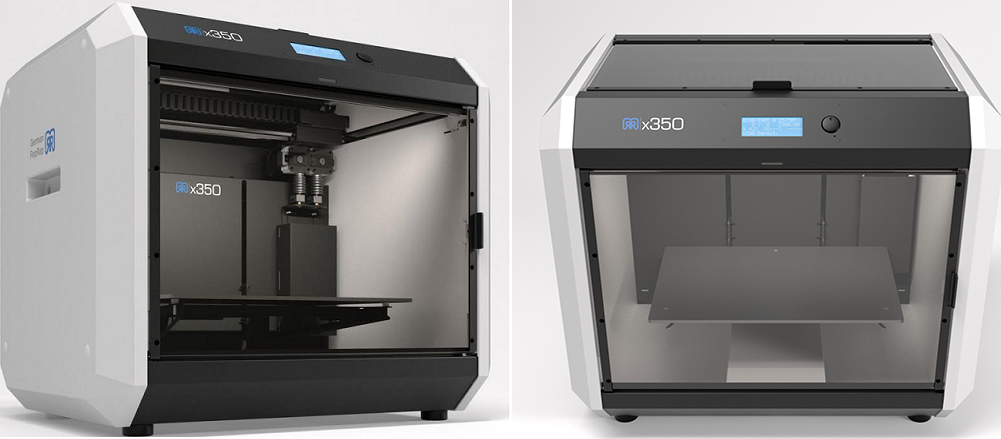 This is an excellent printer for a beginner, but the quality and consistency are good enough for professional applications. At 30 watts, it is economical to operate.
This is an excellent printer for a beginner, but the quality and consistency are good enough for professional applications. At 30 watts, it is economical to operate.
- Fast printing
- Low power
- No Display
- Resolution
The Monoprice Mini Delta 3D printer was the clear winner here. For a printer with its features, the price is almost unbelievable. Wi-Fi connectivity and use of SD cards to store print files make it very user friendly. The heated bed also makes this the only printer on the list that could be comfortably used in a professional setting.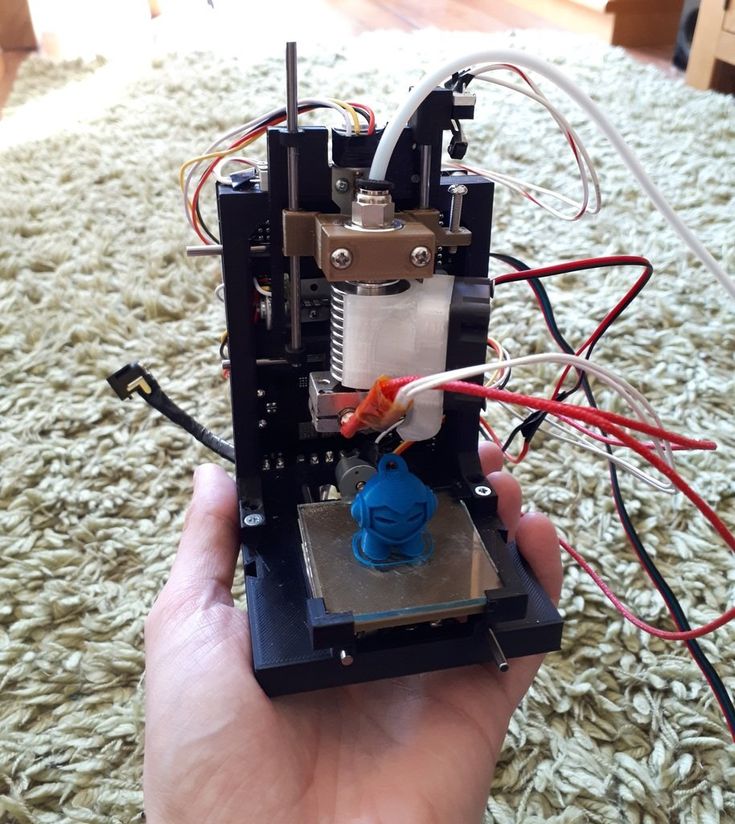
Featured Image: Image by ZMorph4D from Pixabay
Last update on 2021-12-12 at 04:27 / Affiliate links / Images from Amazon Product Advertising API
Anyone can afford the unique Tiko 3D printer
News
It finally happened! A 3D printer was born that anyone can afford! On March 30, Canadian company Tiko3D launched a Kickstarter campaign to raise funds for its delta 3D printer. Incredibly, she managed to bring the price down to $179 (!) and still win.
The Tiko 3D printer has an unusual one-piece frame. The rails here are built right into the frame, forming a single whole with it. As a result, print quality has increased and costs have been reduced to a minimum.
Most of the parts that Tiko is assembled from are designed by the company's specialists from scratch. Other unusual features include the innovative thinner for passive extruder cooling, which successfully replaces the fan, internal fiber tray and printing with different filaments. In general, we can safely say that Tiko is not like any other 3D printer.
In general, we can safely say that Tiko is not like any other 3D printer.
The main printer specifications are listed below:
- Printer weight: 1.68 kg
- Dimensions: 39 cm x 22 cm x 24 cm , ABS, Nylon, HIPS, etc.; filament thickness 1.75 mm
- Print resolution: 50-250 microns
- Software: cloud-based, browser-based
- Features: titanium nozzle, WiFi connection, closed cooking chamber with auto-off function
As we said above, the printer costs only $179. The Kickstarter campaign launched on March 30, and in the first 90 minutes, Tiko raised over $80,000 from 585 backers. If $179 seems like a lot to you, know that the first 100 backers got their printers for just $99(!) and the next 400 for $139.
"We could have raised the price higher, but we wanted Tiko to be accessible to everyone," says a company spokesperson.
Tiko3D plans to start full-scale production this November after extensive testing and optimization of the device.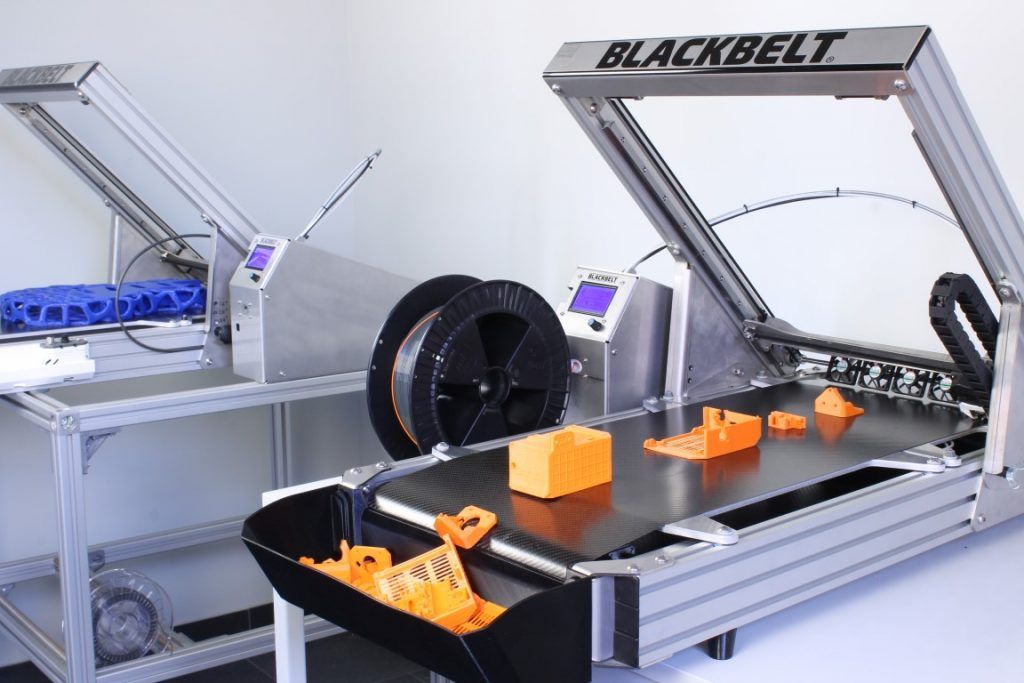 If all goes according to plan, the first shipments will also begin in November.
If all goes according to plan, the first shipments will also begin in November.
Follow author
Follow
Don't want
1
More interesting articles
ten
Subscribe to the author
Subscribe
Don’t want
The leaders of the Rosatom business accelerator InnoHub and OOO Invoshchenie signed an agreement on the provision of...
Read more
four
Follow author
Follow
Don't want
ETH Zurich-based startup NematX announces...
Read more
82
Subscribe to the author
Subscribe
Don't want
Collaboration 3D
We are pleased to present you our joint development with Speci.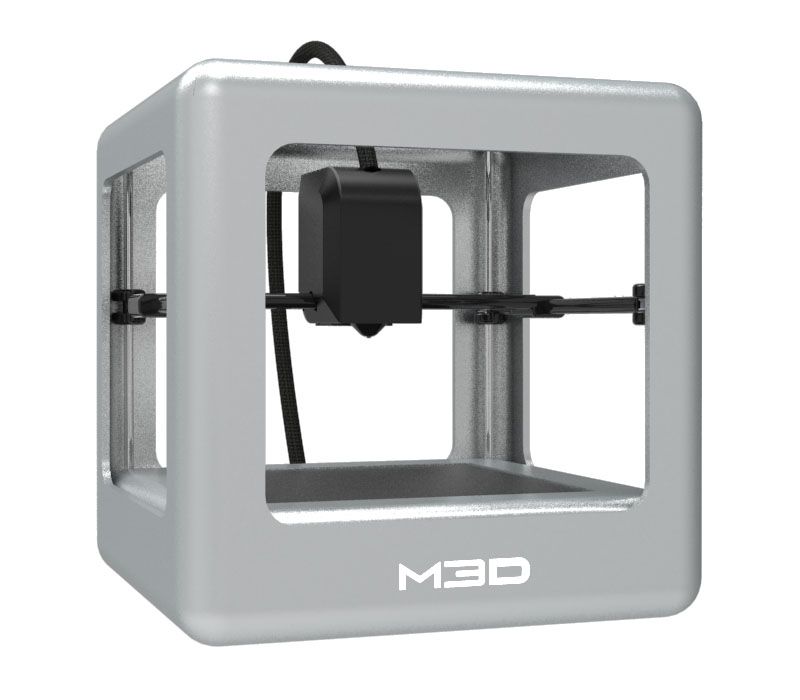 ..
..
Read more
TIKO 3D printer - controversial Kickstarter project
A small report on the purchase of a 3D printer (used) from the eBay site (America).
The Tiko 3D printer is a small and interesting device.
Details under the cut.
Greetings to all visitors of the site 3dtoday.ru !
A short story about how I bought and completed a 3D printer from the famous startup Tiko 3D.
This is quite an interesting 3D printer with delta kinematics. Not without childhood diseases of course.
Tiko official website.
I have long wanted to participate in large crowdfunding companies. I occasionally participate in small ones. Especially in the field of various technologies.
Constantly monitoring new startups with 3D printers and 3D printing. Now there is a fundraising for a small and inexpensive Geeetech E180A printer. As for the Tiko project specifically, The Unibody 3D Printer is one of the most successful projects at the start.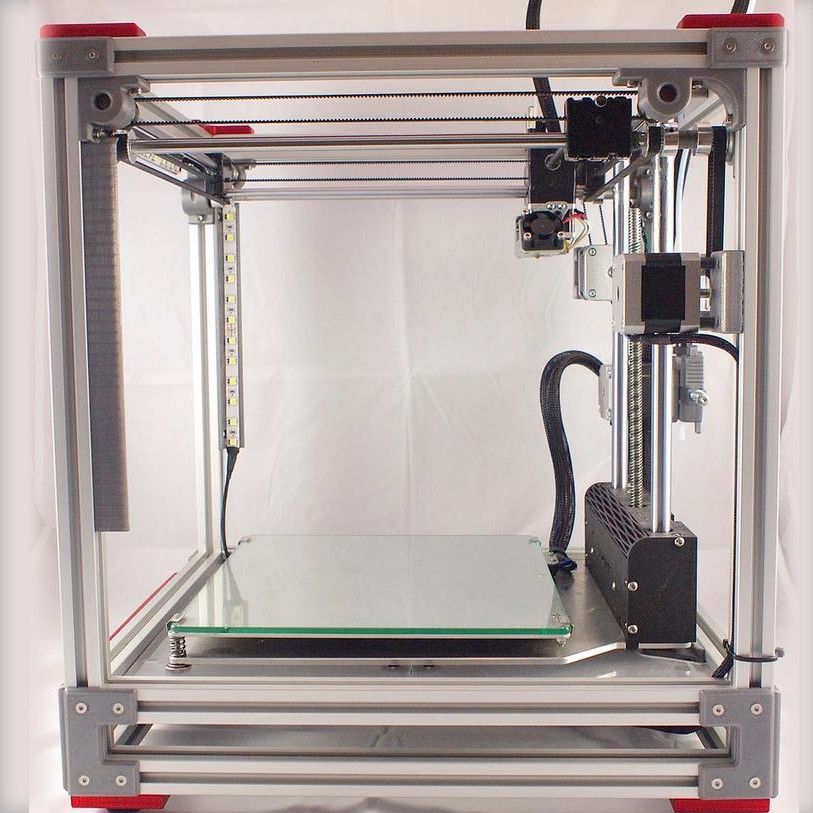 Tiko raised over $2.9 million. There were over 16,000 backers.
Tiko raised over $2.9 million. There were over 16,000 backers.
Project page on kickstarter
I didn't manage to buy it as a backer. The last opportunity to deposit funds was closed at the beginning of this year. The guys collected much more than they had planned and, to celebrate, began to spend money. They launched mass production of printers ... not completely correcting children's sores. For example, the lack of airflow. Well, there were certain problems with accelerations and inertia at high speeds - the printer still "specializes" for printing up to 30 mm / s , although it is clear that it can be more.
I had to look for one of the used printers. There are quite a lot of them (there were) - the backers refuse, they don’t know how to get rid of the received device. There were several options on eBay, at very low prices. It was possible to take for a quarter or half the price of a printer in excellent condition.
Here is the lot I won.
The salesperson is one of the first backers, a fireman from Cloverdale, California, who bought and got upset because he couldn't print on the printer. The printer had a minimal gap, a virtually untouched native spool of filament.
At the moment (at the time of publication of the review) - it was not possible to buy a printer on eBay or on the official website (out of stock). In the title of the review, I indicate the lot, which I also bought.
But there are other interesting options , for example, M3D Micro - a similarly inexpensive device with children's "sores", around $100. Can be taken for a child or as a first printer. Similar to the Tiko 3D, the M3D Micro's pros are its small size and good looks (and it's easier to ship).
Characteristics:
Brand: TIKO
Model: Unibody 3D Printer
Type of kinematics: deltabot
Extruder type: bowden.
Construction area: Diameter 125 mm.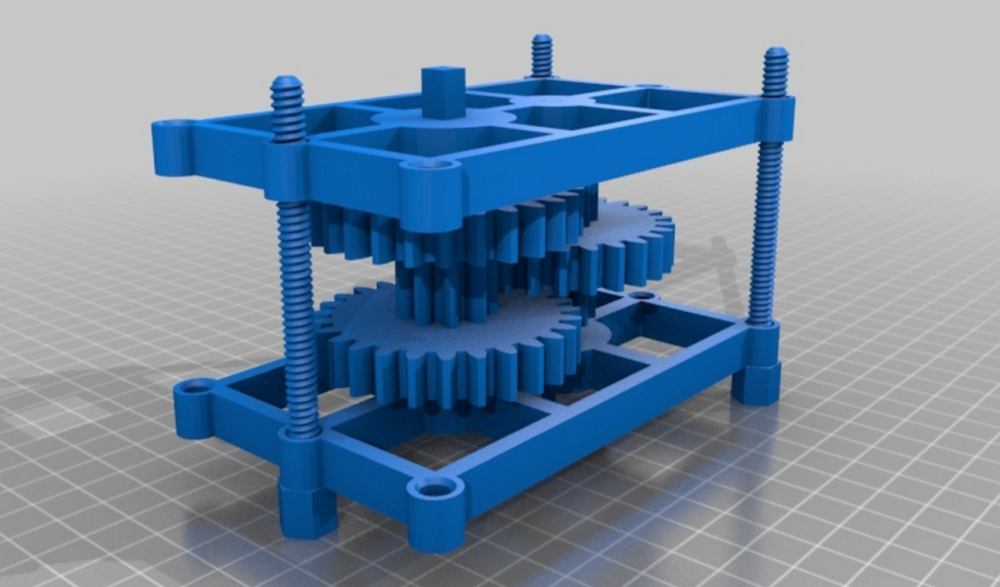 Height 125mm
Height 125mm
Features: load-bearing housing, Wi-Fi hotspot, built-in slicer.
Adhesion: polymer backing.
Effector: steel+ceramic, 0.4mm
Materials: PLA/ABS.
Dimensions: 222 x 235.9 x 450mm
A small infographic from the official site: the main functions that startups relied on are indicated.
Externally, the TIKO 3D printer looks like a white plastic tower with a transparent insert. The coil is located at the top under the cover. The whole structure is fixed on the supporting white part of the body. Removable underlay. There is no heating or cooling.
Unibody dimensions and build area illustration
Done right, this is a good printer. Of course, not everything is smooth with him, but we will try to cope.
I was looking for a suitable lot for a long time (there were three options during the summer months). But there were no problems to win the lot - not the most popular product.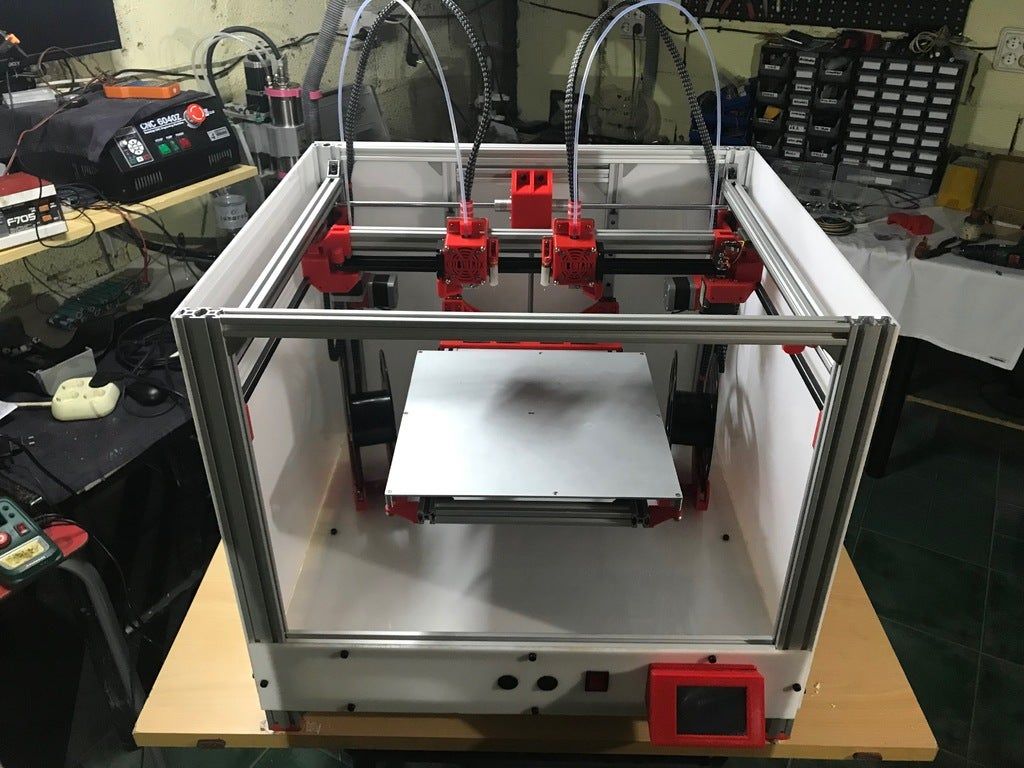
Purchased the printer through an intermediary forwarder (details at the end).
After about 20 days (painful waiting, especially for the results of customs clearance) I received a huge box.
Inside original packaging with printer, printer in foam shell.
"Shell" repeats the shape of the printer - a very good packaging.
Separately, I will highlight the instructions - very detailed.
There was also a backer's card and a DVD.
There was a separate power source in the cell - an adapter for 12V (2.5A)
Spool with native blue PLA filament has been installed in the compartment on top
Spool is almost intact. True, plastic for six months in printed form has already begun to crack and break.
Cell for the coil
Unpack the printer, check the condition
Delivered intact))) The printer deservedly takes its place on the desktop. It looks like the rest of the office equipment - very good. At least the design is head and shoulders above that of Pryush.
Manufacturer's label. The basic information is carefully indicated, up to the connection address.
A photo of the printer on the desktop. Connects via Wi-Fi.
I'll tell you in detail about the design.
The main focus of the developers is minimalism and lightness of construction.
Minimal effector: composite+ceramic. It heats up quickly, does not require blowing the thermal barrier.
The extruder motor is centrally located on the main body.
Carriages are lightweight, made of flexible plastic such as high impact polystyrene (or similar). You can take it off and put it back on with almost no effort.
You can take it off and put it back on with almost no effort.
Guides (3 pcs) - plastic "rails".
Uses small 12 volt BYJ-48 motors.
The motors move along the rack. Lubrication is present.
Please note: the limit switch is mounted on the carriage itself.
Power connector
Rods and effector - everything is as light as possible.
The backlight is dynamic, strong enough. The LEDs are arranged in a ring on the board.
All harnesses are plugged in. A flexible cable goes to the hot end.
Bowden tubes with fittings. Can be disassembled, disconnect the tube for maintenance. Made very thoughtfully.
The print base has a special plastic pad for adhesion.
Print marks from previous owner visible.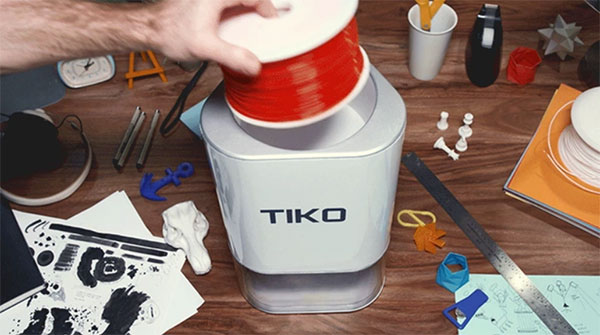
The Tiko board is very specific. It has Wi-Fi and a slicer on board.
All parts of the printer - the design turned out to be very technological.
We connect the printer to the outlet, we are waiting for the software to download (after downloading, the backlight turns on).
To connect to the printer, select the Tiko Wi-Fi network and then type in the browser line:
print.tiko/editor or - 192.168.1.1 .
Connect from a smartphone in the same way.
When turned on, the printer thinks for a while, then starts blinking in greeting.
Loading the model (Add object)
You can also use the manual options (menu on the left). This is the heating of the nozzle, the loading and unloading of the filament.
Insert the filament into the tube and push it all the way into the extruder mechanism.
Press Load filament and wait for the end
You can extrude a little to check
The result of extrusion
Unloading is similar - Unload filament
Select a model, press print
The slicer is working. You can print. Don't forget about calibration. When printing, you can skip the calibration step (or run it automatically).
Print settings
Printing in progress
To stop printing, you can lift and tilt the printer
When accessed from a smartphone, the same pages open. And slicing does not "strain" the smartphone.
It is extremely convenient to perform calibration from a smartphone - it is easier to control and adjust the nozzle manually
Before printing, select the option of manual calibration (or automatic)
The point is to alternately set the height (touch) of the nozzle on the table surface.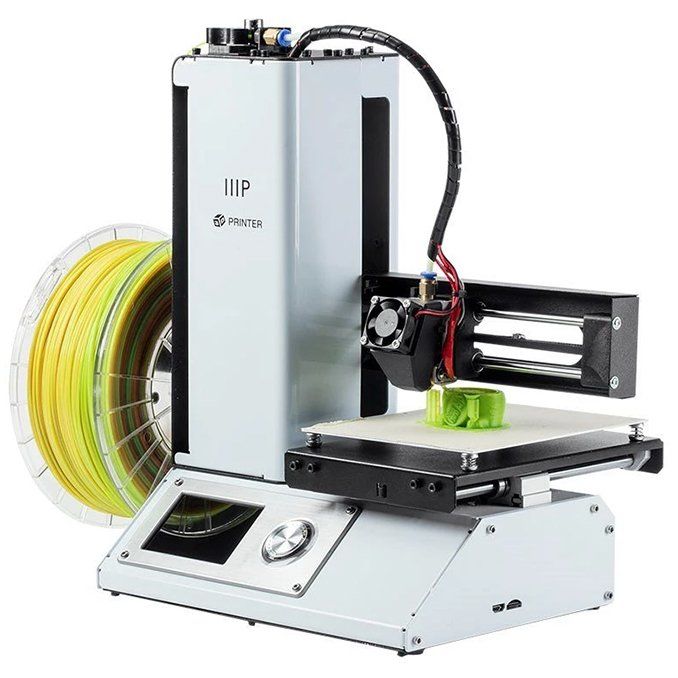
Use the ▲ and ▼ keys to adjust the nozzle close (well, or under the paper) to the substrate.
Press Done for each step (3 dots).
The printer moves to the next point.
Finishing and parking
Calibration completed
You can send the first model to print.
When I turned on the printer, I gave a series of beeps and an error "301" - auto-home failure. It was necessary to correct one of the engines on the rail. By the way, they install almost effortlessly.
Loading filament. Here I encountered the fact that the old filament was present (and two colors at once). The former owner printed with silver filament, which was pushed heavily through the nozzle. I had to clean it by hand.
It is necessary to push through the old filament, which remained in the area after the extruder - the former owner could not cope, he apparently had a clogged nozzle or tube.
Loading did not go through properly, apparently there were pieces of the old filament inside.
Disconnect the tubes from the extruder (there is a simple clamp) and push through.
I pushed mine by hand with the nozzle warmed up.
Until I pushed out all the remnants of native plastic, and mine appeared (green).
Now standard loading
First print.
Raft does not turn off on models (Gcode editing only)
It can be seen that the printer does not have enough airflow. The plastic is starting to sag.
By the way, one of the pieces of the 'native' blue plastic got on the photo - it broke and such pieces got stuck in the tubes. Apparently forced to sweat the first owner.
Printing a test cube
The cube turned out better.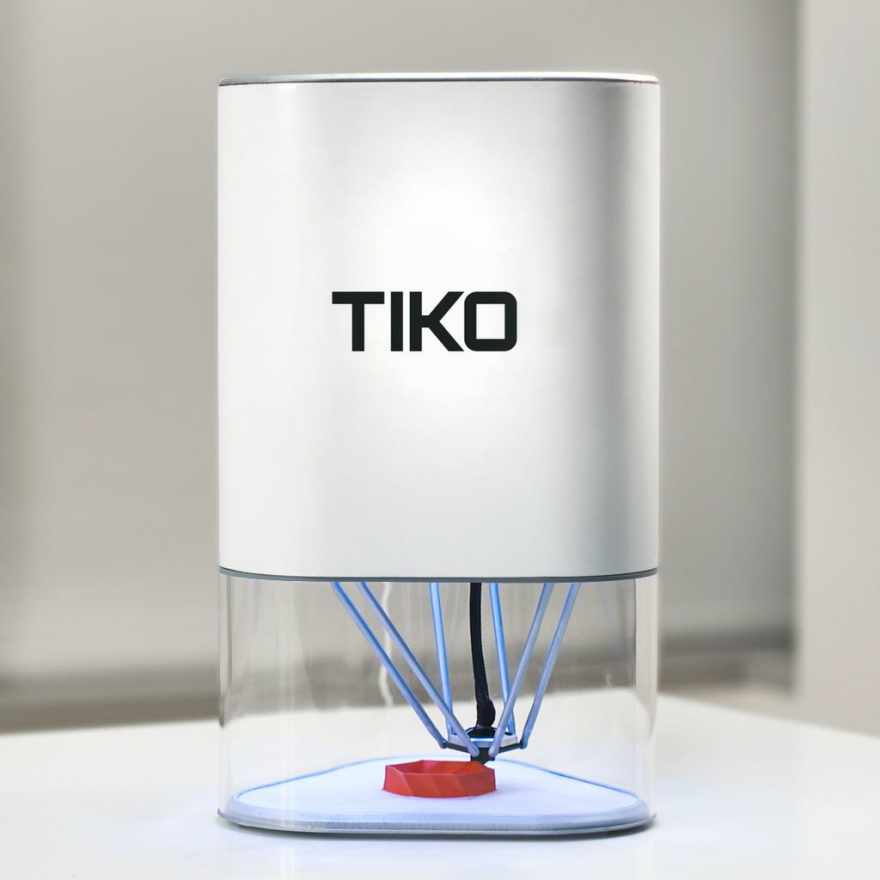
Calibration steps.
By the way, the Z-hope option is enabled. The printer raises its head slightly when moved.
Top slightly smeared from overheating.
Again you can see that there is not enough airflow for PLA.
Pay attention to the printer modification models on thingiverse, in particular to this collection. The easiest way to implement this is with tubes and a small turbine or compressor.
You can print the tube holder for the effector.
This is what it looks like assembled. Tubes can be used silicone with an outer diameter of 6 mm (as from an aquarium).
Additionally, you can print a tee for pipes (one inlet, and three pieces are blown).
Air blower can be used with an aquarium compressor or turbine.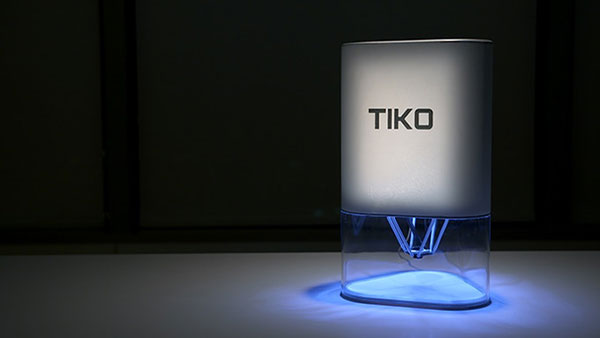
I used a 12V impeller with a tube adapter.
It blows quite decently, but I would like more
Pre-printed some splitters.
The tubes are threaded into the holders on the effector.
Alternatively separate nozzles can be used.
The hot end of the printer is best insulated with silicone tape or Kapton.
After installing the blower with a turbine, I started printing again.
That's what happened. For PLA, the print quality has increased to an acceptable level
For comparison, both models: on the green (without blowing), the edges are smoothed due to the lack of blowing of the model during printing
Well, similarly "native" test model Tiko.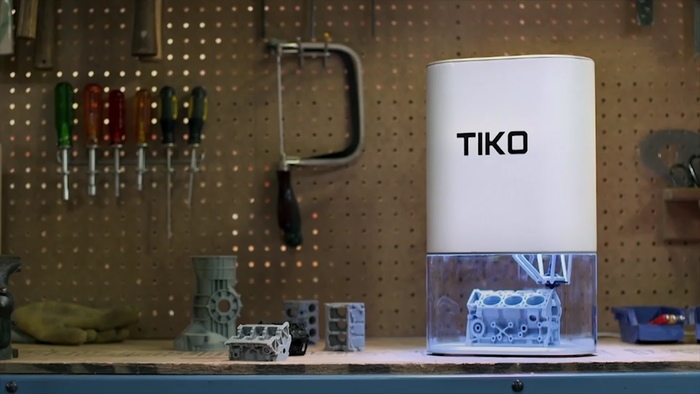 The print quality has grown)))
The print quality has grown)))
Here are a couple of printed models.
Bunny Flat Figurine
The print quality is quite tolerable, especially for a $100 printer.
Frog
I note some hairiness. Still, the turbines are not enough, I will put the compressor from the aquarium (larger and quieter).
Print animation))))
Quite an entertaining process.
Pins:
Fairly good budget 3D printer with excellent price/quality ratio. The guys from the startup Tiko got almost . Almost - because improvements are required.
Pros : Great balance between price and features. There is a built-in slicer (a huge plus when controlled from a smartphone / tablet), there is Wi-Fi, backlight, some functions such as turning off the printer by tilting and auto-calibration.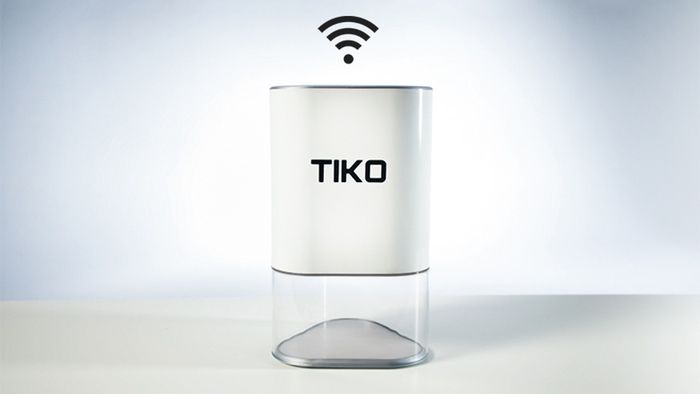
Cons : Due to the servo drives used in the design, the printer turned out to be very slow, the carriages and motors need to be heavier. And given that there is no more than complete airflow in the drain, it is difficult to print PLA with good quality. Improvements and treatment of "childhood diseases" of the printer are required.
Regarding shipping: on the one hand, the price is decent, on the other hand, it is an opportunity to get a printer for half the price.
Details of the reseller I used and the delivery process
The printer, like most Kickstarter startups, was sold in America. To bring to the Russian Federation, you need to either negotiate with the seller (not everyone agrees), or use the services of an intermediary. I have been looking for a suitable one for a long time (the weight of the printer is about 5.5 kg, the dimensions are also decent - this directly affects the cost of delivery). I turned to intermediaries with a question about the possibility of sending exactly a 3D printer, in packaging, transport tariff, as well as with a question about the declaration and customs clearance.


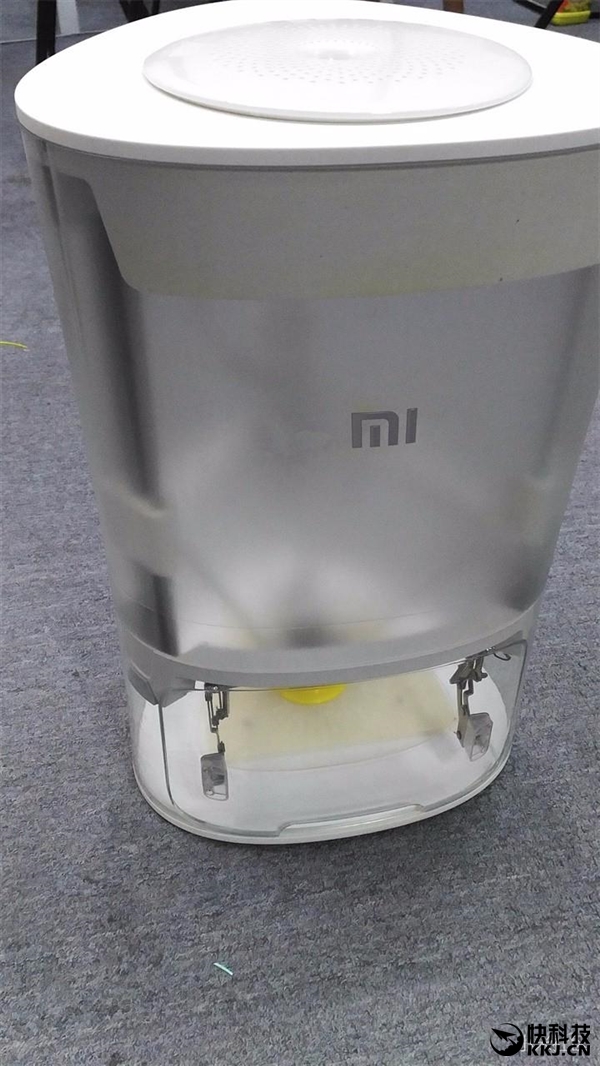 3” x 4.3” x 4.7”
3” x 4.3” x 4.7”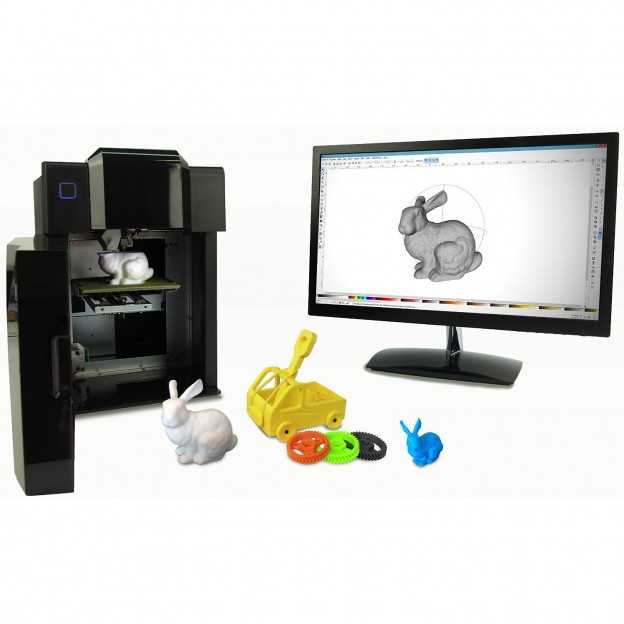 6 64-bit)
6 64-bit)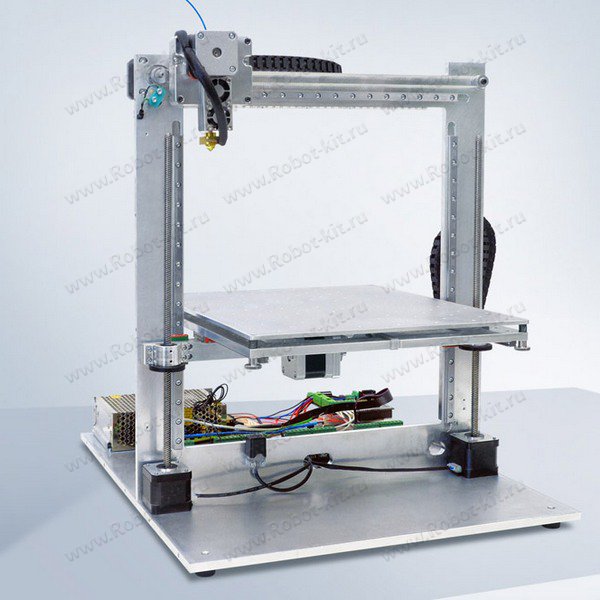 3” x 4.5” x 4.6”
3” x 4.5” x 4.6”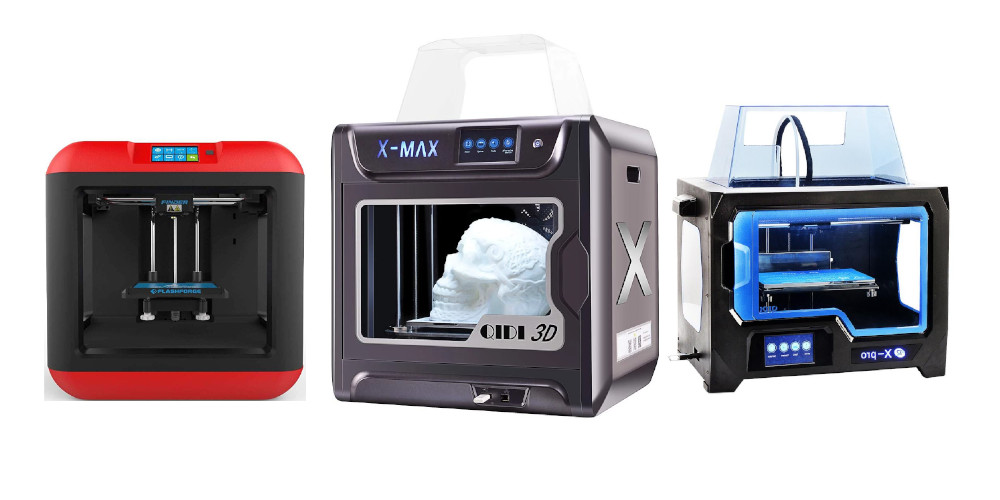 3” x 7.3” x 7.3”
3” x 7.3” x 7.3” 9” x 5.9” x 5.9”
9” x 5.9” x 5.9”  8 and
8 and 9” high
9” high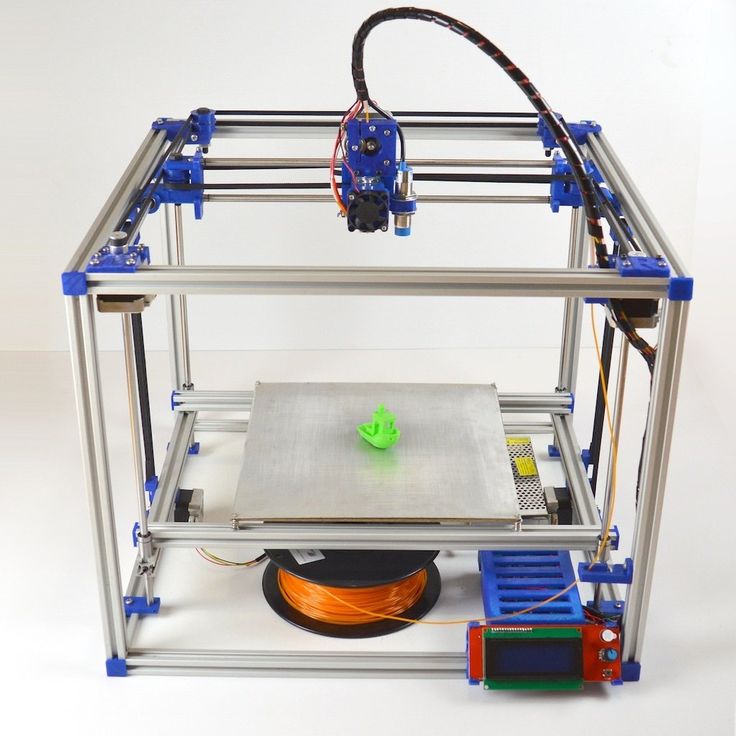 9” diameter x 17.5 high
9” diameter x 17.5 high

.jpg)
